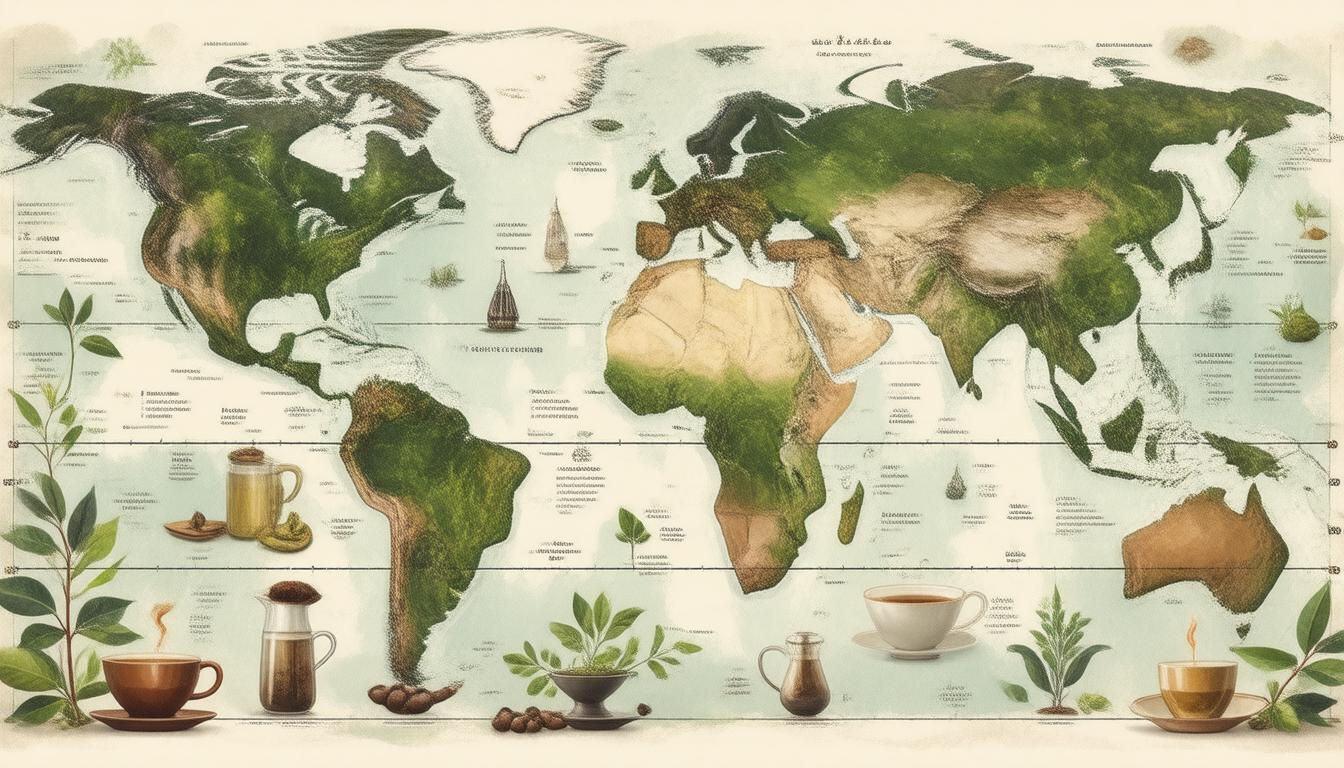Coffee: a simple beverage that has transcended cultures, economies, and centuries. Its history is as rich and diverse as the coffee beans themselves, woven into the very fabric of societies around the globe. In this exploration, we trace coffee’s origins from the lush highlands of East Africa to its status today as a global commodity, a cultural touchstone for millions.
Origins in Ethiopia
The story begins in the Kaffa province of present-day Ethiopia, where the coffee plant, Coffea arabica, was first domesticated by local populations. The fruit of this plant, known as the coffee cherry, is harvested for its seeds — the coffee beans — which are roasted and brewed into a beverage called “Buna.” This early consumption was not merely for pleasure; it played a significant role in social and spiritual gatherings, especially among Sufi monks in monasteries.
By the 2nd millennium, coffee made its journey across the Red Sea to the port city of Mocha in Yemen, where it was named "Qawah." Initially associated with religious practices, the drink gained popularity, especially during pilgrimages to Mecca, paving the way for its introduction into the Muslim world.
Coffee in the Islamic World
As coffee’s allure spread, it prompted the establishment of coffee houses, known as qahveh khaneh, which became hubs of social interaction, intellectual discourse, and entertainment. However, the stimulating properties of coffee were met with skepticism from some conservative clerics. Despite initial resistance, the Ottoman Empire’s conquest of the region in 1517 heralded a new era for coffee as bans were lifted, particularly in Constantinople, where it flourished.
Venetian merchants soon stumbled upon coffee, which they referred to as "caffè," importing it to Europe. Yet, Mocha maintained a tight monopoly by forbidding the export of coffee plants, a prohibition that was eventually circumvented by innovative individuals such as Baba Budan, who smuggled coffee cherries to India.
Rise of Global Trade and Cultivation
With the emergence of the Dutch East India Company, coffee began to infiltrate Europe more freely. The Dutch established coffee plantations in Java, ushering in a new wave of production that significantly impacted the global market. France, too, recognized the potential of coffee and sought to cultivate it in its colonies, leading to the establishment of plantations in places like Martinique and Bourbon Island.
As demand for coffee soared, so did the number of countries involved in its cultivation. The Portuguese, British, and Spanish joined the coffee race, establishing plantations in Brazil and the Caribbean, often relying on enslaved labor from Africa. By the 18th century, coffee had transformed from an exclusive luxury into a widely consumed commodity, particularly in the Americas and Europe.
The Impact of Revolutions and Economic Challenges
The Boston Tea Party of 1773 marked a pivotal moment in American history whereby rebels adopted coffee as a substitute beverage, associating tea with loyalty to Britain. In the ensuing decades, global coffee production skyrocketed, with Brazil emerging as a dominant player. However, this explosive growth was not without challenges, including the 19th-century coffee rust disease that devastated many traditional growing regions, prompting a search for more resilient coffee species.
The Birth of Instant Coffee and Global Regulations
The early 20th century saw innovations in coffee production and consumption, notably the development of instant coffee by Nestlé in 1938. During World War II, this innovation provided soldiers with a quick and convenient coffee option. Yet, trade disruptions brought about by the war led to price stabilization efforts, culminating in the creation of the International Coffee Organization in 1962 to regulate global coffee prices.
However, after the collapse of price agreements in 1989, coffee-producing nations experienced unprecedented oversupply, leading to significant market challenges. Vietnam’s rise as a major robusta coffee producer in the late 20th century further intensified competition, often at the expense of smaller producers.
A Sustainable Future for Coffee
Today, the coffee industry is marked by the dualities of abundance and struggle. Approximately 10 million tons of coffee are produced annually, with consumption heavily concentrated in the Northern Hemisphere. Notably, Europe boasts the highest per capita coffee consumption, with over 2 billion cups consumed daily.
Amidst these challenges, fair trade initiatives have emerged to protect small producers from volatile market conditions by ensuring minimum prices for their products. This movement aims to foster sustainable practices within the coffee trade, balancing the needs of consumers with the rights of producers worldwide.
Conclusion
The journey of coffee from the Ethiopian highlands to its global ubiquity is a profound tale woven with historical significance, economic shifts, and cultural transformations. As we savor our daily cups, we partake in a legacy shaped by centuries of human interaction, exploration, and innovation. The story of coffee continues to unfold, echoing the intricate tapestry of our shared history.
Ready to get in the game and start making money on Pump.fun? DogWif Tools is the #1 memecoin sniper tool for becoming a Pump.fun millionaire. Get DogWif Tools today and become a memecoin dev!








